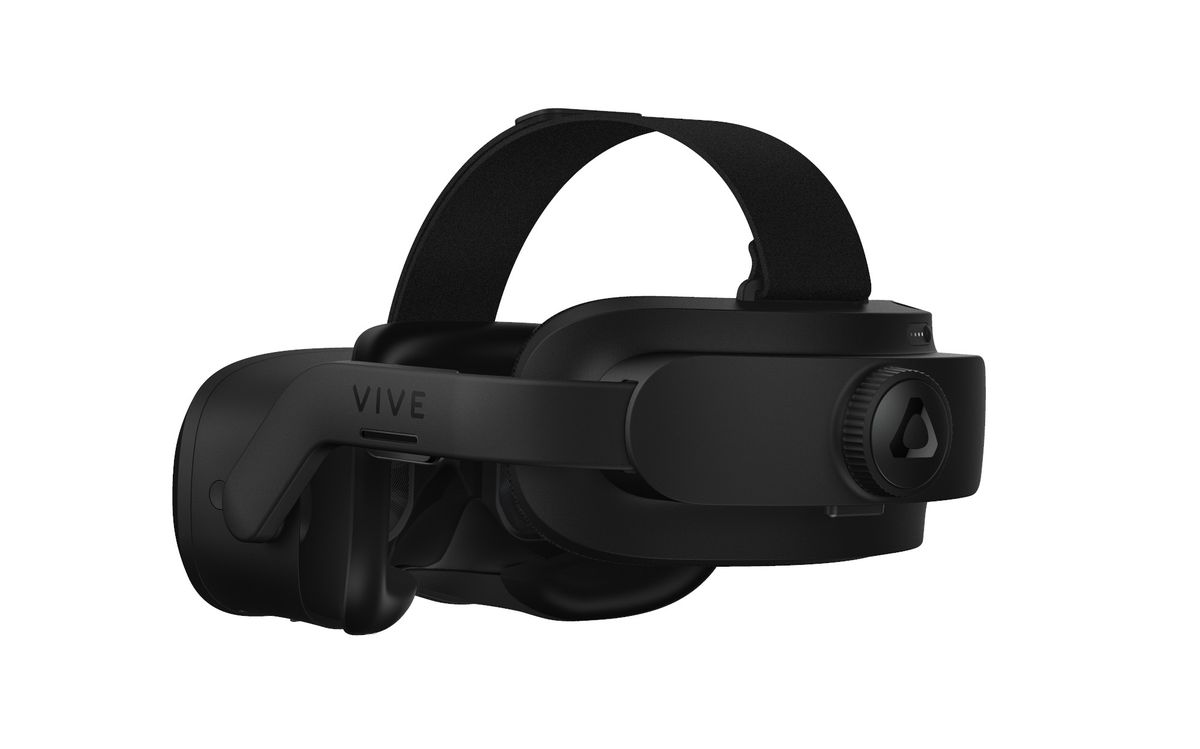HTC is revamping its Vive Focus standalone virtual reality headset, adding a 5K screen, a 120-degree field of view, and a swappable battery. The Vive Focus 3 follows HTC’s Vive Focus Plus. Like its predecessor, it’s a self-contained product that uses inside-out tracking instead of external sensors, designed for business customers. The headset will be released worldwide on June 27th for $1,300 — a price that includes tech support and a suite of business services.
The Vive Focus 3’s biggest specs upgrade is its display. The headset uses one 2448 × 2448 panel for each eye with a 90Hz refresh rate, compared to 1440 x 1600 pixels per eye with a 75Hz refresh rate for the 2019 Vive Focus Plus. (For the record, there’s no Vive Focus 2 — HTC seems to be retroactively giving the Focus Plus that status.) That’s a leap over the 2160 x 2160 pixels per eye you’d find with the HP Reverb G2, a more significant bump over the 1832 x 1920 pixels per eye of the Oculus Quest 2, and a vast improvement over first-generation VR headsets from a few years ago.
:no_upscale()/cdn.vox-cdn.com/uploads/chorus_asset/file/22506483/VIVE_Focus_3___reverse_angle_2.jpg)
The Focus 3’s 120-degree field of view also improves on the Focus Plus’ 110 degrees. Where the Focus Plus had a built-in battery, the Focus 3 has a swappable battery that’s mounted on the back of the headset for better balance. HTC promises two hours of battery life and a quick-charge system that will restore 50 percent of the battery with a 30-minute charge. And it uses Qualcomm’s Snapdragon XR2 chip — based on Qualcomm’s Snapdragon 865 — in place of the Focus Plus’ Snapdragon 835.
HTC also says the Vive Focus 3 will be more comfortable than its predecessor, thanks in part to features like the back-mounted battery, as well as a reworked strap design. Both systems use built-in speakers. But HTC touts a new and improved audio system, including an “audio privacy” setting that reduces the amount of sound people around you can hear — a running issue with VR headset speakers.
The Vive Focus 3 could be a Quest 2 competitor — but HTC isn’t interested for now
The Vive Focus 3 has a lot in common with Facebook’s consumer-focused Oculus Quest 2, which was released last year. The Quest 2 is also a standalone, XR2-powered VR headset. And while HTC’s first controllers were trackpad-based remotes, it’s moved toward a system that basically mimics the Oculus Touch controller. The Vive Focus 3 design features a Touch-style analog stick, two triggers, two lettered face buttons, and one menu or home button on each controller. Hand tracking — which the Quest 2 also supports — is supposed to arrive in a future update.
The Vive Focus Plus had a streaming system for wirelessly playing PC games on a headset, similar to the Oculus Quest 2’s Air Link, and the Vive Focus 3 includes Vive Business Streaming, a cable-based system for connecting it to a PC. (Wireless streaming will be added later, HTC says.)
:no_upscale()/cdn.vox-cdn.com/uploads/chorus_asset/file/22506485/VIVE_Focus_3___Controllers.jpg)
HTC Vive general manager Dan O’Brien describes the Vive Focus 3 as higher-end than the Quest 2, not only in specific features like screen resolution and a replaceable battery, but in overall ergonomics and performance. It’s one of only a few headsets that directly compete with the Quest 2’s all-in-one design. And unlike Facebook, HTC doesn’t require a social media-based sign-in — arguably the worst feature of the Oculus Quest 2, and a factor some VR fans have called a dealbreaker.
But HTC is steering consumers away from the headset. The company is still maintaining a consumer-focused games store called Viveport, and O’Brien says HTC expects some gamers to buy its newly announced Vive Pro 2. But the Vive Focus 3 was designed with feedback from carmakers, professionals running simulation training, medical companies, and other enterprise customers. Instead of including consumer media or fitness apps, HTC provides services like a centralized device management system or six months of free Vive Sync, a VR meeting and collaboration tool that launched last year.
HTC isn’t completely out of the consumer business
O’Brien says that selling business hardware is simply more sustainable right now than selling to consumers — largely because of price expectations. “The consumer market has gravitated toward these artificially subsidized price points that really only one company in the world has any tolerance for,” he says. That company is Facebook, which sells the Oculus Quest 2 at a starting price of $299 — less than a quarter of the Vive Focus 3’s cost.
“If we wanted to take our products and try to compete in that space, we would have to make the active decision as a for-profit company to lose money for the foreseeable future,” then make it up through software sales or a system like Facebook’s advertising model, O’Brien says. “That’s a very different business model and market, whereas the enterprise and professional market is a very healthy and rapidly growing market where we can bring real value and solutions.” Competitors like Varjo have taken a similar tack, experimenting with innovative display systems and augmented reality features but aiming their efforts solely at businesses.
By contrast, HTC’s consumer-focused Vive Cosmos “has not performed as well as we would have liked,” although the company is still looking at ways to advance the brand. “I think the consumer story is still yet to be told from HTC, but that’s something to be told in the future,” says O’Brien. The Vive Focus 3 isn’t part of that story — at least for now.
